|
Chapter 1
16th
October 1999 – 12th January 2000

Sat 16th October
The adventure starts in a theatre in London, watching Phantom of the
Opera. I have never seen
any of Andrew Lloyd Webber’s work.
Jen thinks this is a failing on my part and, as her elder son (Tris)
works for ALW, the price of the tickets is very reasonable (free).
I am very impressed by the show, the scenery and effects as much
as the singing, and enjoy it enormously.
Sun 17th October
Our borrowed alarm clock goes off at 0415. I have not yet mastered the alarm on my personal organiser.
Jen has ordered a taxi which delivers us to the specified
terminal. This turns out to
be the wrong one. Good
start.
My first attempt at Spanish is buying coffee at Madrid airport - café
con leche. The waitress
comes back with - algo más? which means anything else but I was not
expecting a reply and look puzzled.
She switches to English immediately.
Our Peruvian friend, Marlene, is not at Lima airport to meet us (what a
surprise) so a taxi to the Youth Hostel seems easiest.
The Youth Hostel has a good selection of house cows (in some
areas Peruvians have two ceramic cows incorporated into their ridge
tiles for luck) and uses low energy electric light bulbs throughout.
Francisco Pizarro founded Lima in 1535, only two years after the
invasion. By 1610 Lima’s
population had reached 26,000, made up of 40% Blacks (mostly slaves),
38% Spanish, 8% Indian, another 8% (of unspecified ethnic origin) living
in religious orders and the rest of mixed blood.
Today, Peru has a population of 26.5 million of which a quarter
live in Lima.
Mon 18th October
I ring Marlene and discover she’s working and living in Cusco.
We can stay at her house. She
will ring again tonight at 2000.
We go out to explore Miraflores. I
notice the street cleaners making a valiant effort to clean the sides of
the three lane motorway with one cone each to protect them from the
speeding traffic. The first bank we try changes travellers’ cheques
with no problem. A local
woman warns us about keeping hold of our bags when we enter the market
area.
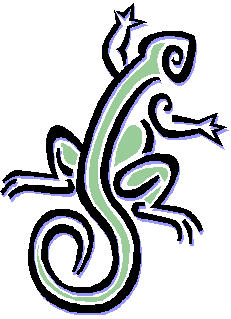
We come across Huaca Pucllana, a vast pre-Inca adobe mound, but there are
guided tours only and the English one has just left.
The guide book says it has a hollow core running through its
cross-section and is thought to have been constructed in the shape of a
giant frog, symbol of the rain god, who evidently spoke to priests
through a tube connected to the cavern at its heart.
Sounds very plausible, doesn’t it?
The hole in the wall rejects my card but accepts Jen’s and then I
notice it is a Mastercard not a Visa.
This is not because we need any money but just to check whether
it is possible to use our cards in these machines.
It is lovely and warm at 0830.
By mid afternoon the mist has come in and it is noticeably
cooler.
Behind the Youth Hostel is a walled garden full of pigeons calling and
getting to know one another. In
one corner there is a hummingbird.
The garden itself is planted with what would be houseplants in
England.
Later that evening there is no call from Marlene.
I suggest to Jen that she can eat the box of expensive chocolates
she bought to give to Marlene’s family which goes down well.
We spend the evening in the garden discussing the Peruvian
psyche. Jen is also trying
to organise our trip out which is usually my department!
Tues 19th October
We take a 5C bus into the city as the Youth Hostel is quite a way out of
the centre. The bus runs in
its own lane in the middle of the motorway.
Jen and I are both standing, looking out at the city. I hear a noise and look round to see Jen being dragged down
the bus by the strap of her purse.
Someone has grabbed her purse and attempted to break the strap
but it is made of sterner stuff. He
gives in and leaps off the bus. This
has all happened in a moment and everyone else seems too surprised to
try and grab the guy. Jen
is OK although a bit shaken. She
grabbed the purse too and was not going to let go.
As the traffic gets more congested and slows down the street vendors
start. Newspapers, ice
creams and copies of the latest laws are all available to purchase from
the comfort of your own car.
The chap next to me notices me looking at a map of the city and informs
me that this bus is going to pass by the centre. We alight in a market in a very rough area and immediately
take a taxi to the Plaza de Armas.
In the square they are changing the guard.
We can’t resist taking photos of the men in their blue and red
uniforms.
The station is nearby and we discover that there are no trains from Lima
to anywhere. In the street
we see a man selling live iguanas.
At Pueblo Libre, another area of Lima, the Archaeological and
Anthropological Museum is to be found.
It has an excellent collection of pottery and textiles; gold and
silver; mummies and examples of trepanning.
A collectivo takes us back to Miraflores where we stop for a coffee and
watch a woman trying to sell puppies in the street. The evening passes playing Rummikub. How come Jen always 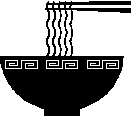 has a smiley face (like a joker) to
finish with? We chat with
Tony, an Australian, Todd, an American and Ralph, a Swiss.
Two Germans join us and one thinks we have American accents!
The Germans have eaten at the Chifa next to Chicken Pardo’s.
They say it was the best Chinese they have ever had but cost
100S+ (£18.50+). They
disappear for a beer with Ralph, complaining about the need to take an
empty beer bottle to the supermarket in order to buy more.
How does one ever buy the first bottle, I wonder?
Scour the streets for an empty one? has a smiley face (like a joker) to
finish with? We chat with
Tony, an Australian, Todd, an American and Ralph, a Swiss.
Two Germans join us and one thinks we have American accents!
The Germans have eaten at the Chifa next to Chicken Pardo’s.
They say it was the best Chinese they have ever had but cost
100S+ (£18.50+). They
disappear for a beer with Ralph, complaining about the need to take an
empty beer bottle to the supermarket in order to buy more.
How does one ever buy the first bottle, I wonder?
Scour the streets for an empty one?
Wed 20th October
Ralph cannot decide whether to catch the overnight bus to Arequipa
tonight or tomorrow and spends some time discussing the advantages and
disadvantages with anyone who will listen. The Germans also want to go to Arequipa at 1530 but it is a
fourteen hour bus ride and one has an upset stomach.
Our taxi arrives shortly after the promised 0930 and delivers us to the
collectivo offices. It is
comforting to sit behind the bars in the office with our packs. It is suggested we pay more – the third ticket - but no, we
will wait for a third customer. They
relent first. The
collectivo is a modern Japanese car with red furry seats and red furry
dashboard cover.
On the way out of Lima we drive through a holiday area, with swimming
pools, fishing, horse riding and lots of places for Limeños to stay.
The journey takes four hours. We drive past bare hills and mining
towns on a good road. There is snow at the highest point at Ticlio and
we see a few llamas.
As we drive into Tarma I notice a little girl throwing a stick at a young
bullock to get it into a shed. She
is only about five years old. The
taxi driver is very surprised we don’t want a good hotel.
We choose the Hostal Bolivar at 20S (£3.70).
It is a huge, very run down place with a dark and gloomy
entrance. Maybe we’ll
just stay one night. The
town of Tarma (the pearl of the Andes) is based on the usual grid but
there are few street names which makes orienteering rather difficult. We are not impressed after an afternoon wandering around
(which bit was the pearl?) and find the bus out to Huancayo. The bus will leave at 0500 tomorrow morning.
Although the drivers make every effort to avoid running over animals
occasionally the road kill is tufty where the flesh has been eaten by
other creatures and all that is left is a bit of fur. Peruvians and Bolivians use their horns all the time to
signal “I am passing”, “I want to pass” and as a warning to
pedestrians or animals who are on the road or may be thinking of using
it.
Thu 21st October

Jen is out of bed first after a night probably dreaming of bedbugs.
The bus turns out to be a collectivo (a minibus as opposed to a
coach) and it is only about two hours to Huancayo, half of which is on
dirt tracks through rural Peru. We
cross a flat plain between the hills covered with cows, pigs, sheep,
dogs. The out of town
homesteads consist of a house and yard surrounded by mud brick walls.
In town the houses look like rooms over garages.
There is a hint of rural France because of the shutters and
closed doors but there are always lots of people in both traditional and
modern dress. At one house
I see a dog approach a tiny kitten from behind and sniff it.
The kitten looks absolutely horrified but does not move.
In Huancayo we move into the Hotel Pussy, 15S (£2.77) with baño
(bathroom). Jen changes
money at the Bank. One has
to take a queue ticket, just like in Safeway.
I chat to another teller.
The town is having a “Save Energy” Festival and the streets are
crowded with school children carrying placards, bands and dancers (any
excuse for a party).
The Tourist Office suggests we visit Wanka. What? Wanka.
Having ascertained how to get to Wanka, we walk to the train
station and are taken under the wing of Alberto the Station Master to
purchase our tickets to Huancavelica. The train leaves at 1200 on Saturday 12S (£2.20) each.
We sit down outside the Tourist Office to discuss our next move and are
accosted by some Peruvians, Isabel the mother, Isabel the daughter and
Teresa, Isabel the mother’s sister (and therefore Isabel the
daughter’s aunt!). Isabel
the daughter wants to study in another country like England.
Jen suggests Isabel writes to her in English and we end up being
invited to dinner the next evening.
In Huancayo the taxis cost 3S to go anywhere in town so we catch one to
Wanka. It is a highly
decorated garden which defies description.
Outside the garden there are stalls selling crafts and an area of small
restaurants. I try
yuyo and chicha. I am given a huge plateful of yuyo, unidentifiable green
stuff (tastes like sea spinach) with grains (probably quinoa) and a chicha, home-made, hardly
alcoholic, beer. It is very
nice but, as usual, far too much. The
women running the restaurants are very friendly and want to know all
about us.
spinach) with grains (probably quinoa) and a chicha, home-made, hardly
alcoholic, beer. It is very
nice but, as usual, far too much. The
women running the restaurants are very friendly and want to know all
about us.
On the way back I notice once again the way stones are used as warning
signs. If your truck breaks
down on the road, just take some stones from the hill to surround your
vehicle and keep the traffic away.
If you are repairing the road, just use stones to warn the other
traffic there is a giant hole coming up that they should try and avoid.
The grumpy women (is this because we keep thinking of things to ask) at
the Tourist Office cannot help with tours around Huancayo.
We have to visit the actual tour companies’ offices.
They are both closed. There
are queues outside banks waiting for them to open.
Is this because it is still siesta time or is there a run on the
nuevo sol?
I want to buy some rope to attach to my camera so I can hang it around my
neck. In true Peruvian
style there is one chap to cut off a piece of rope and write a chit,
another in the caja to pay and a third to wrap my purchase.
We visit the Correo (Post Office) and pass another huge queue of people
waiting outside the identity card office.
I don’t know how often they have to renew their identity cards
but there are always big queues outside these places.
Whilst Jen is writing her postcards I have my boots cleaned.
We are now passing time until the tour companies’ offices open
so partake in a coffee and pisco sour.
They are still closed. We
walk up the road to investigate a restaurant, La Cabaña, that is
rumoured to have live music. It is almost at the address we have been given and the
entertainment starts at 2100.
After the massive lunch at Wanka we don’t want much to eat at La Cabaña.
Jen has warmish boiled potatoes covered in tasty (I don’t think
so) cheese and salad. After she has finished her meal, mine turns up with many
apologies - spicy octopus and pork on fried potatoes with hot sauce and
salad. You can tell we just
stabbed wildly at the menu.
At the next table are Alison, an Irish girl, Ana, a Peruana and a
Scandinavian boy. Alison
tells us she hasn’t heard an English voice for ages.
The first band plays for two hours.
They are very lively and the singer is determined to dance as
well as sing despite the tiny proportions of the stage and the number of
musicians and instruments it contains.
The music is based on the traditional panpipe stuff but with the
addition of an electric guitar and a touch of rock ‘n’ roll.
At 2300 the second band starts.
Again there are lots of them, their music is more traditional
this time. They are both
very good.
Fri 22nd October
We try the tour companies’ offices again. Andino Tours cannot do anything today but Peru Tours has a
tour leaving at 1030, in a quarter of an hour.
We race back to the Hotel to collect our cameras and water.
The first stop is Hualhuas, a little village outside Huancayo
where their speciality is weaving. A young lad sits in front of a huge loom continuing to work
whilst answering questions from the tourists.
The next village, San Jeronimo, specialises in silverware.
We are shown into a shop with displays of silver filigree figures
and plates. The couple who
run the shop then take us into their kitchen where the actual work is
done. In a third village
there is a beautiful Spanish style house around which we are shown.
At the lake, Eusebio, our guide, takes us rowing.
I think there is something in the bag on the seat and yelp but it turns
out to be a loose plank  on which someone is treading on the other side
of the boat. The peace and beauty of the occasion is slightly spoiled by
the extremely loud music emanating from the restaurants lining the bank.
Not just one tune but four or five competing with each other.
Our group consists of one Peruvian lady, two Peruvian couples and
one Swedish couple. We try
to understand the Spanish commentary, Eusebio speaks very clearly but
too fast for us. on which someone is treading on the other side
of the boat. The peace and beauty of the occasion is slightly spoiled by
the extremely loud music emanating from the restaurants lining the bank.
Not just one tune but four or five competing with each other.
Our group consists of one Peruvian lady, two Peruvian couples and
one Swedish couple. We try
to understand the Spanish commentary, Eusebio speaks very clearly but
too fast for us.
After the lake we move on to a trout farm at Ingenio, a huge place in a
valley between two mountains, full of pools of trout in all sizes.
“No fishing” the sign says.
Then there is the obligatory monastery, the Convento de Ocopa,
but as you have to pay Jen and I decide we would rather sit
outside and watch the people. I
talk to a traditionally dressed Granny with a wonderful brown hat about
the birds. Dogs amuse
themselves chasing the buses.
At our Hotel hot water has to be ordered and it arrives after half an
hour. We prepare ourselves
for our evening out and take a taxi to Isabel’s house.
Dinner turns out to be black coffee and home-made pancakes with
jam. We meet Carlos,
husband and father, and make faltering conversation for a couple of
hours. They speak no
English.
When we return to La Cabaña, Nancy, our waitress is surprised and
pleased that we are back. Did
we give her too big a tip the first time?
The same first band is playing.
We move into the room with the stage when a table is free so
Nancy can serve us. Ana
calls in again for a little while and we exchange addresses and emails.
Then the dancing starts! We
have never seen Peruvian people dancing like this.
It’s great.
The girl at the next table is called Elena. She is a travel agent for Inka Peru and her companion Mañuel
is an archaeologist. She
can speak English and is happy to talk.
Mañuel only speaks Spanish and is not her boyfriend although he
clearly wishes otherwise. She
keeps telling him to speak to me, dance with me, anything to keep him
occupied whilst she chats to Jen.
On the other side of me is someone who plays here on Wednesdays.
He speaks a little English.
The singer of the first band joins us during a break as he knows
Elena. The owner 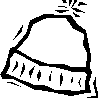 of the
club climbs on stage to sing with the band and later comes over to talk
to us because Elena works for him too.
He also owns the travel agency which is next door. He reminds me of a Peruvian Texy. We get home very late that night. of the
club climbs on stage to sing with the band and later comes over to talk
to us because Elena works for him too.
He also owns the travel agency which is next door. He reminds me of a Peruvian Texy. We get home very late that night.
Sat 23rd October
Jen wants another woolly hat so we trawl the stalls dotted around the
square looking for the right one. Every
few hundred yards there are stalls piled high with oranges and
grapefruit. Freshly pressed
juice is available to drink now and to take away.
We would love to take some for the journey but are suspicious of
the cleanliness of the offered bottle.
I find an Internet place and after some difficulty connect to hotmail.
No messages. I write
to John, Boatshed and Andrew in half an hour (2S).
We take a taxi to the front of the station this time.
We are travelling executive class with a buffet and uniformed
stewards. There is a huge
variety of food. Everyone
is playing cards. We cause
a bit of a stir to start with but then they settle down and ignore us.
Up the valley there are magnificent views and drops to the river.
As the train pulls in to a station the dogs line up outside
waiting for scraps, which seem to be plentiful but don’t look very
nice.
The rest of the passengers are wearing coats and hats and wrapping
themselves in blankets but Jen and I are not cold. At Huancavelica we take a taxi to the Hotel Presidente.
The taxi driver says it is very expensive and suggests another,
the Hotel Ascension close by in the square.
We have a room with a lavatory and basin for 10S (£1.85) each as
opposed to 30S (£5.55) each without bath and 45S (£8.30) each with
bath over the way. Dinner
is trout and bifstek followed by papaya.
This was not what we wanted but everything else seemed to be off.
No mondongo (probably just as well because we later find out the
translation is bowels). No
piña (pineapple juice). No
ordinary tea. No agua sin
gas (still water).
Sun 24th October
A beautiful day. The Hotel
provides hot water from 0600 to 1000.
We are woken by the bells at 0500.
The shower is too hot to stand under.
I explore the Sunday market – stall after stall heaped with
ironmongery, shoes, clothes and only one or two customers.
I have my boots cleaned by three little boys except I only have
two feet. The four of us
are jeered at by some drunken lads.
Borracho at 0830!
I return to the hotel to collect Jen.
We have breakfast of gruel and bread.
We were hoping it was going to be porridge but it turned out to
be hot milk in a cup with added oatmeal.
We are offered a goat’s head for $5.
There is a bus which goes to Lircay but not to Ayacucho and, no, we
cannot get from Lircay to Ayacucho.
We walk to the thermal baths – the municipal piscina. 1S ordinary entrance or 1.50S for something privada.
We queue for the something.
It turns out to be a small room with its own pool of lukewarm to
cold water. No thanks.
We try the main swimming pool and that’s the same.
We walk off around the town. A
passer-by directs us to another termas with hot water promised this
time. We have to go up the
hill, past everyone washing their clothes and laying them out to dry on
the hillside with the odd duck and donkey walking by.
At the top of the hill there is a huge wall around the University
(still being built). Soldiers
direct us again to the small pool as we have obviously missed it but
when we get there it has more cool water.
We climb down the rocks to look at the river. Every quiet part away from the flow is full of rubbish.
There is rubbish everywhere down the riverbanks.
We have to cross over the bridge, a somewhat rickety suspension
type with gaps in the wooden floor.
Yikes.
We have lunch back in town, 16S (£3.00) for a salad and tortilla or meat
fried rice. We think we are
served far too much but some people obviously don’t think so because
it is a very busy place. Our
waiter refuses to smile. In
the square outside we can hear speeches and an off-key band.
There are young boys and girls marching but we don’t know why.
Later we walk a huge distance round the corner for a coffee
consisting of real milk and coffee essence.
The chap there says we can catch the train to Izcuchaca and take
a bus to Ayacucho from there. Or we may be able to take a taxi. The restaurant is filling up so we feel we’d better leave
as we have long since finished our coffee and just like watching the people. Another walk around
the town watching them watching us.
The Tourist Information office is open
– he will find out about taxis – can we come back in a couple of
hours. We try and find
another café because we can’t keep
going back to the same place. When
we eventually return to the Tourist Information we are informed a 4WD to
Ayacucho will cost 360S (£66.00).
Ha ha. The only
economical way is to take the train back to Huancayo at 0630 tomorrow.
people. Another walk around
the town watching them watching us.
The Tourist Information office is open
– he will find out about taxis – can we come back in a couple of
hours. We try and find
another café because we can’t keep
going back to the same place. When
we eventually return to the Tourist Information we are informed a 4WD to
Ayacucho will cost 360S (£66.00).
Ha ha. The only
economical way is to take the train back to Huancayo at 0630 tomorrow.
Mon 25th October
The alarm on my personal organiser is set for 0525 (I know how to do it
now) but we are awake anyway. There
are already people in the streets including children dressed for school.
The ticket office sells us tickets for 8S each?
The single carriage train leaves at 0630 and we can pay the other
4S on the train. A chap tells Jen this and it sounds so strange that I have to
check with the conductor. The
countryside is still very impressive so we are not unhappy about the
train. Food vendors get on
and off the train, sometimes just at a station and sometimes for a stop.
With only one carriage to cover it doesn’t take long.
The traditionally dressed woman opposite buys hot patas and queso
(cooked potatoes and goat’s cheese).
It looks appetising but is not offered again.
Later another vendor has chicharrones y choclo which is pork ribs
and maize. The lady opposite is partaking again and so do I.
It is very good. The ribs have decent sized pieces of pork on them and the
sweetcorn is paler and blander than we get in England but I like it.
At 1100ish we arrive back at Huancayo.
The Molina bus station is close to the train station so we
arrange our ticket to Ayacucho for 2000 the same day and meet Alex. He is a student learning English and wants to talk to us and
write to us. We call in at
the Hotel Turismo for coffee. As
the coffee shop is closed they serve us in the restaurant and give us
bread and jam too. A taxi
takes us to Elena’s tourist agency to arrange a flight from Ayacucho
to Cusco. Both she and her
boss inform us that there are no flights.
They used to be available but no longer.
What can we do for eight hours without a hotel in which to leave
our backpacks?
By the time we catch the bus we know every street in Huancayo and most of
the hotels and restaurants too. Our
transport is a modern coach with leg room for a change.
It is very hot. The road is a dirt track.
There are complaints from the Peruvian passengers about our open
window. People are standing
in the aisle. Apparently
once they have sold all the seats, the bus companies have another
reduced rate for standing on the bus.
The countryside has an amazing ghostly look in the full moon.
At one point we drive along a tiny road with an impressive drop
to the river. When we cross
a rickety bridge we have to wait for it to steady before driving off the
other end. People get on
and off in the middle of the night, in the middle of nowhere.
In the early hours of the morning two children of perhaps 8 and
10 join the bus and alight a couple of hours later.
We peer into the semi-darkness to try and find some signs of life
but we do not succeed. Before
dawn some of the traditionally dressed women get off to sit by the side
of the road in a village. We
cannot begin to guess why?
We reach Ayacucho at 0430 and take a taxi to La Colema.
Fortunately there is someone available to let us in and we
collapse into bed for four hours sleep.
Tues 26th October
The chaps at the hotel tell us we can sort out our registration later.
We have to change some money and choose the Banco de Credito in
the main square. Jen is a hit with one of the policemen. The Bank is a museum too with a collection of retablos,
finely worked little wooden boxes containing intricate three-dimensional
religious or political scenes made mainly from papier-mâché. It has a wonderful roofed courtyard.
We find the Tourist Office and discover we can fly to Cusco on Friday for
$39 (£24.00). Tours around
Ayacucho are more difficult to arrange because the tour companies want
more people to make it worthwhile.
We walk to the mirador overlooking the town and are mobbed by a
family of children of 3, 5, 7 and 10 who want to beg from us and by
teenagers who want to take photos of us with themselves and their
friends. On our return to
our hotel we sit in the courtyard in the centre.
Around the courtyard are bird cages containing grey birds,
finches, budgies, white doves and one pied magpie.
Wed 27th October
There is no hot water from 0700 to 1000 as promised and I was there at
0700. This time I have to
change some money and I meet Jen’s friend again.
He is very disappointed that Jen is not with me.
We stop at a vegetarian café for coffee and notice a tour shop
in the doorway. Not a shop
exactly more a chap on a chair and a couple of displays of places of
interest. We are offered a
four hour tour to Wari and Quinua with a guide, using local buses.
This is more our style.
Time to take a three wheeled taxi to the Museum.
It is quite small but has displays of pottery, mummies, arms and
textiles. There is a great
painting of Simon Bolivar and another room full of printing presses and
the first newspapers of independence.
At 1400 William, our guide, is waiting with Irma, who wants to learn to
be a guide, and another gringo, a Frenchman with a sense of humour
bypass. The local bus takes
us about 20 km out of Ayacucho to Wari.
Historians claim that this site used to house some fifty thousand
people just over a thousand years ago.
These were pre Inca people who incorporated best of  previous
civilisations into their lives. Their
rule lasted for 500 years. The
remains of the great temple is being restored, slowly.
Along the sides are the tombs for the dead nobles and holes for
the food to take with them. In
the middle is a large round auditorium with stone seats where the
priests and nobles discussed the problems of the city. previous
civilisations into their lives. Their
rule lasted for 500 years. The
remains of the great temple is being restored, slowly.
Along the sides are the tombs for the dead nobles and holes for
the food to take with them. In
the middle is a large round auditorium with stone seats where the
priests and nobles discussed the problems of the city.
Our quiet sightseeing trip is interrupted by a group of school children
on a tour. They are more
interested in us than in what their teacher is saying so he gives up and
watches them running round us giggling and pointing.
When we reach the underground passages in which the Wari hid when
the going got rough, the children get even more boisterous.
Another bus ride through acres of tuna cacti takes us to Quinua.
As well as selling the fruit (prickly pear) the villagers also
produce cochineal from cochamilla, larvae that live at the base of the
cacti leaves. From here we
can walk to the Pampa de Ayacucho and the Obelisk, erected on the site
of the nineteenth century Battle of Ayacucho.
In December 1824 the Spanish lost to Sucre’s Republican force,
finally releasing Peru from the control of Spain.
This area is known for the ceramic model churches on the roofs instead of
house cows.
We are shown round one of the workshops where these churches are made and
smell dope for the first and only time.
Thu 28th October
We meet William at the veggie café at 0900 and walk across town to catch
a bus to Huanta. In Huanta
we catch another bus up to the nearby village.
The villagers are decorating the streets with coloured sawdust
and flower petals.
Constantino is learning English and wants to chat.
Have a juice? Have lunch? William
hasn’t the time. We take
a short walk about looking at plants and spiders.
William wants to show us churches and cannot accept we are
pagans. William was born in Lima in May 78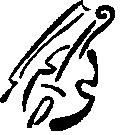 and has lived mostly in Piura
(in the north western corner of Peru).
He moved to Ayacucho two years ago.
He doesn’t work every day, only when telephoned.
He cannot explain how his boss is paid unless by the Wari museum.
He says it would be easy to go to Europe as he has an uncle who
is a Doctor in Germany. He
does not mention the huge cost of an exit visa or the luck involved in
getting one. Unlike the chap in the Post Office yesterday who was
complaining to us how difficult it is to leave the country. and has lived mostly in Piura
(in the north western corner of Peru).
He moved to Ayacucho two years ago.
He doesn’t work every day, only when telephoned.
He cannot explain how his boss is paid unless by the Wari museum.
He says it would be easy to go to Europe as he has an uncle who
is a Doctor in Germany. He
does not mention the huge cost of an exit visa or the luck involved in
getting one. Unlike the chap in the Post Office yesterday who was
complaining to us how difficult it is to leave the country.
The people of Ayacucho are also decorating part of the plaza.
There is a procession in the main square with an off key band.
The old ladies all wear purple.
The buildings are decorated in purple.
I cannot remember the reason for the celebration but I am sure
someone told us.
Two doors up from our hotel there is another band practising.
Three flutes, two small and two large acoustic guitars and a
violin. We put our heads
around the door to see what is going on and are invited in to listen.
Fri 29th October
Up at 0550 for our taxi to the airport (5S). Our breakfast is cut short by the announcement of the plane.
We are still eating toast whilst walking into the departure
lounge. The flight leaves
at 0755. Jen greets the
pilot and tells him to drive carefully.
The air hostesses offer us water or Inka Cola.
55 minutes later we arrive at Cusco.
To take us to San Blas the first taxi wants 10S and the second
wants 5S. San Blas now has
a tourist agency in its entrance. The
courtyard has been covered. There
are carpets and a TV. And
no San Blas Snr/Jnr. We are
informed they went to Argentina 12 months ago.
Jen and I start in one room with private bath 40S (£7.40) and
are soon moved to another with an outside window.
The bathroom is newly built.
There is lots of work going on in the hotel.
The Hotel Monasterio is full of gringos and there are no waiters to show
us around, they’re all too busy.
It is too cold to sit outside in the courtyard.
Cusco has much more traffic, more beggars, more touts.
There are girls with llamas on every corner and hostals
everywhere.
Sat 30th October
We move out of San Blas to a cheaper place down the road.
Our room has no key. We
buy a Cusco Ticket which is now $10 or 34S each (£6.25), double last
year.
We walk up to Sacsayhuaman. It
is still very impressive. Where
there used to be two lots of horses, there are now many more.
Some horses look in good condition, and some have new saddles.
The standard ride is out to Tambo Machay via the other Inca sites
but I am told another route is possible.
Jen and I decide to walk. We
are following Jose Luis, a young Peruvian, and his two customers as we
do not actually know the way. Jose
Luis is walking and his customers are riding.
At the Temple of the Moon we meet two more young lads, Alessandro
and Juan. They can speak a
little English and show us around the Temple, pointing out the remains
of the carvings. After a
couple of hours of hard walking we stop for lunch of chiclo (sweetcorn)
and queso (cheese). Jose
Luis charges us 6S and takes the money to pay the owner of the
restaurant in the next room. Later I hear others being told lunch costs 2.50S each.
Jose Luis has had his cut. It
is 1600 by the time we reach Tambo Machay and we are very tired.
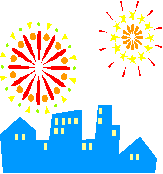 Fortunately we manage to catch a collectivo back to Qenko (1S), the
closest site to Sacsayhuaman. This
revives us and we are able to walk back to our hospedaje in
Triumfo. There is
still no key. The lavatory
is blocked. There is no hot
water. We move to the next
room because it has a key but the lock doesn’t work there either. We are beginning to think that moving to this hostal was not
such a good idea. We pack
for our trip up the Sacred Valley and
I realise that I have left my wheels at San Blas. Fortunately we manage to catch a collectivo back to Qenko (1S), the
closest site to Sacsayhuaman. This
revives us and we are able to walk back to our hospedaje in
Triumfo. There is
still no key. The lavatory
is blocked. There is no hot
water. We move to the next
room because it has a key but the lock doesn’t work there either. We are beginning to think that moving to this hostal was not
such a good idea. We pack
for our trip up the Sacred Valley and
I realise that I have left my wheels at San Blas.
Fireworks are planned in the square tonight. The riot police are out in force. At 2205 someone lights the first blue touchpaper.
The display is very slow. A
band on the stage plays modern music.
A brass band plays outside cathedral, nearby, and another band
competes at the other end of the steps.
Someone is giving a running commentary on the fireworks but we
are losing interest so give up. The woman who is always at our hospedaje is not there.
Fortunately the people from the Internet place in the same
building come out as we arrive. They are unhappy about letting us in but we insist.
Sun 31st October
We are woken by more fireworks in the Plaza. There is someone moving around outside. We presume it is one of the ladies from the shop downstairs.
Jen goes out to the shower dressed only in a towel and I go out
on the walkway in my T-shirt and knickers to see what the weather is
like. Hola!
It is a young lad sweeping.
We pay him for the night 30S and manage to explain that we are
leaving half our luggage until later in the week.
Jen wants breakfast so we walk to the top of the Plaza de Armas.
We can have two Yunta desayunos for 10S.
Mixed juice, fried eggs or pancake with chocolate, toast with
butter and jam, fruit salad, tea or coffee.
The café boasts a huge TV which is showing a programme about
Peruvian village life but I cannot understand it.
We take a taxi to Huascar to catch the bus to
Pisac. The taxi driver
offers to take us for 50S. Gradually
his price comes down to 20S (£3.70).
There is a huge queue for bus tickets.
A Dutch couple are also looking for alternatives to the bus and
we decide to share the taxi. At
Pisac the taxi driver offers to take us up to the ruins for another 10S
between the 4 of us. OK. Many buses
and taxis are parked at the entrance.
Our tickets
are checked further down the hill. The
rest of the (small) space is filled with people selling fried pigskin,
gaseosas (fizzy drinks), textiles and trinkets for tourists.
We ask the taxi driver to wait and then take us to Ollantaytambo.
It is still quite a walk to the ruins.
Terraces, water ducts and steps have been cut out of solid rock
and in the upper sector of the ruins, the main Sun Temple is the equal
of anything at Machu Picchu. Way
below the temple, on a large natural balcony, a semicircle of buildings
is positioned under row upon row of stone terraces thought to represent
a partridge’s wing (pisac meaning “partridge”).
Whilst wandering around I catch a little boy trying to photograph me and
when I turn around  he pretends he is photographing a very uninteresting
rock. So I pose.
He doesn’t know what to do but his friend does.
“With me, with me.” Another
picture of me in a Peruvian album somewhere. he pretends he is photographing a very uninteresting
rock. So I pose.
He doesn’t know what to do but his friend does.
“With me, with me.” Another
picture of me in a Peruvian album somewhere.
After an hour at the ruins – no taxi driver. Jen has his official licence card with his name, car make and
number. The Dutch couple
wait with us for a while. We
discuss what to do if he doesn’t come back.
He has our rucksack in the boot of his taxi.
The Dutch couple leave, rather worriedly, as they want to see the
market in the town.
Our taxi driver turns up and drives us to Ollantaytambo.
On the way he admits he has never driven there before and has
underestimated how far it is. He wants to put the price up.
We thought his price was very cheap so we have no objection.
He is worried we are going to be angry with him but we convince
him otherwise.
The first hostal we try appears closed.
The second, next to the train station, is full.
A passing American tells us that the town is full of parties of
schoolchidren as it is a bank holiday and all the hostals are full.
The second hostal suggests a third up the road.
Our taxi is still outside so he drives us up the road and waits
whilst Jen asks. The rates
are $60 (£37.50) for a very posh suite or 50S (£9.25)
for 2 beds in a 4 bedded room.
There is a separate bathroom and shower room outside with hot
water.
Clutching our tourist tickets we head for the Ollantaytambo ruins along
with the rest of the world. The
car park is jam packed with buses and taxis (including ours). Good
terracing. Lots of paths
and steps and enough room for everyone.
The grain store on the opposite mountain looks like a carving until I
walk up the valley far enough to see it from the side.
How did they get up there?
Mon 1st November
Breakfast wasn’t included – another 10S.
A group of Australians and English are staying in the posh bit.
At the station tickets are 8S (£1.50) each for second class or
9S (£1.66) each 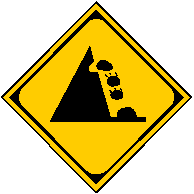 for first class. A
train comes in. We try and
board it but are told it is not our train – there is another one in 5
or 10 minutes. Another train comes in.
We get on but it is very crowded so we stand. Standing with us are two Americans, George and Sandra, a
Dutch couple and a Brazilian girl, Marla, with her brother. When the ticket collector arrives he says we are on the wrong
train – this one is more expensive.
We argue that we were told to get on this one.
Eventually he gives up and goes away, there are too many of us
with the same story. We
arrive at the new posh station at Aguas Calientes and it takes some time
before we recognise where we are. Then
we find the old station and all is well. for first class. A
train comes in. We try and
board it but are told it is not our train – there is another one in 5
or 10 minutes. Another train comes in.
We get on but it is very crowded so we stand. Standing with us are two Americans, George and Sandra, a
Dutch couple and a Brazilian girl, Marla, with her brother. When the ticket collector arrives he says we are on the wrong
train – this one is more expensive.
We argue that we were told to get on this one.
Eventually he gives up and goes away, there are too many of us
with the same story. We
arrive at the new posh station at Aguas Calientes and it takes some time
before we recognise where we are. Then
we find the old station and all is well.
Next Chapter
Top of page Home |